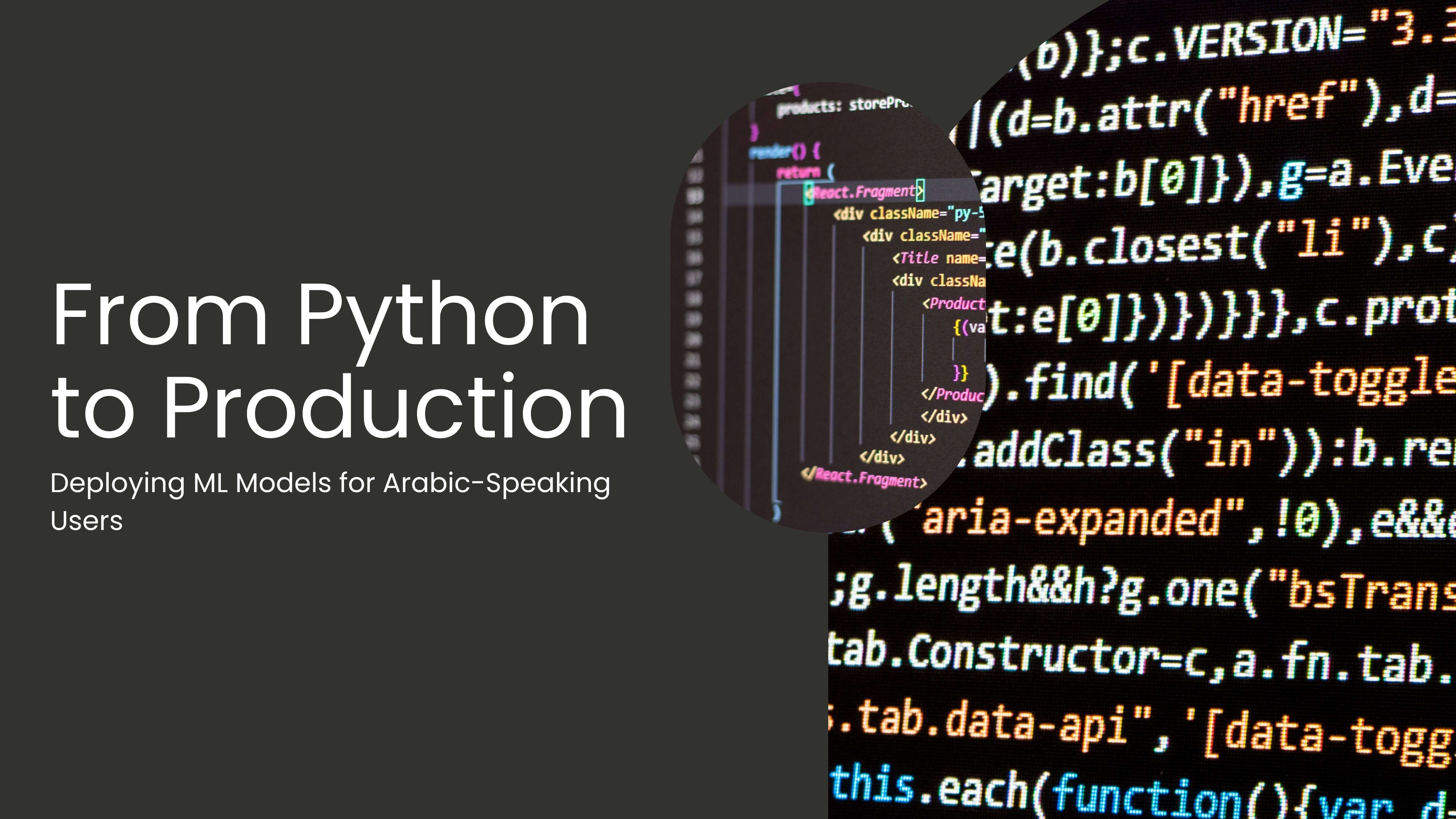From Python to Production: Deploying ML for Arabic Users

Deploying machine learning models for Arabic-speaking users presents unique challenges that go beyond typical ML deployment scenarios. This post explores the journey from Python prototypes to production-ready systems that serve Arabic markets effectively.
Understanding the Arabic Market Context
Arabic-speaking users have specific needs that must be considered when deploying ML applications:
- Right-to-left (RTL) text rendering
- Arabic text preprocessing and normalization
- Cultural context in user interface design
- Regional variations in Arabic dialects
- Performance considerations for emerging markets
The Technical Stack
For Arabic ML deployment, I've found success with this technology stack:
Backend Infrastructure
# Flask API with Arabic text support
from flask import Flask, request, jsonify
import pickle
import numpy as np
from arabic_reshaper import arabic_reshaper
from bidi.algorithm import get_display
app = Flask(__name__)
# Load pre-trained model
model = pickle.load(open('arabic_sentiment_model.pkl', 'rb'))
@app.route('/predict', methods=['POST'])
def predict():
text = request.json['text']
# Arabic text preprocessing
processed_text = preprocess_arabic(text)
prediction = model.predict([processed_text])
return jsonify({'result': prediction[0]})
Frontend Considerations
The frontend must handle RTL layouts and Arabic typography:
/* CSS for RTL support */
.arabic-content {
direction: rtl;
text-align: right;
font-family: 'Noto Sans Arabic', sans-serif;
line-height: 1.8;
}
.form-input {
text-align: right;
direction: rtl;
}
Data Pipeline Challenges
Arabic text processing requires special attention to several factors:
Text Normalization
Arabic text comes with various forms of the same character. Proper normalization is crucial:
- Removing diacritics (tashkeel)
- Normalizing different forms of letters
- Handling Arabic numerals vs. Hindu-Arabic numerals
- Managing punctuation and special characters
Tokenization Strategies
Standard tokenization doesn't work well for Arabic. I implemented custom tokenization that considers:
- Word boundaries in connected script
- Prefix and suffix handling
- Root-based morphological analysis
"The key to successful Arabic ML deployment is understanding that Arabic isn't just English written in different characters – it's a fundamentally different linguistic system."
Deployment Architecture
For production deployment, I use a microservices architecture:
Service Layer
- API Gateway: Handles authentication and routing
- Text Processing Service: Dedicated Arabic text preprocessing
- ML Inference Service: Model predictions with caching
- Response Formatting Service: Formats output for Arabic UI
Performance Optimization
Arabic markets often have varying internet connectivity, so optimization is crucial:
- Model quantization to reduce size
- Aggressive caching strategies
- Progressive loading for mobile users
- Offline capability for critical features
Cultural Considerations
Technical excellence means nothing without cultural sensitivity:
User Experience Design
- Color choices that respect cultural preferences
- Icon selection that's culturally appropriate
- Error messages in clear, respectful Arabic
- Date and number formatting according to local conventions
Content Moderation
Arabic content moderation requires understanding of:
- Religious sensitivities
- Regional political contexts
- Dialectal variations in offensive language
Monitoring and Maintenance
Production systems need robust monitoring:
Key Metrics
- Arabic text processing accuracy
- Response times across different regions
- User engagement patterns
- Error rates by Arabic dialect
Continuous Improvement
Regular model updates based on:
- User feedback in Arabic
- Performance metrics analysis
- New Arabic language trends
- Regional usage patterns
Lessons Learned
After deploying several ML systems for Arabic users, key takeaways include:
- Start with cultural research, not just technical requirements
- Invest heavily in Arabic text preprocessing
- Test with native Arabic speakers throughout development
- Plan for regional variations from day one
- Performance optimization is critical for user adoption
Deploying ML for Arabic users is both challenging and rewarding. Success requires technical expertise combined with deep cultural understanding and continuous learning from the user community.